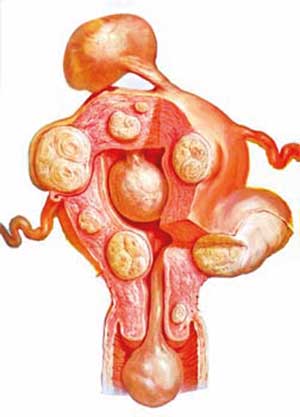Reply To:
Name - Reply Comment

The development of fibroids is a common occurrence among women. This condition usually prevails among unmarried women or those who don’t have children. While these are benign tumours which develop in the womb, many could be removed or shrunk through various treatments. Speaking to the Mirror Health Capsule, Dr. Sanath Lanerolle, Consultant Obstetrician and Gynaecologist, explained how fibroids developed in women, the symptoms associated with them and the treatment available.

QWhat are fibroids?
Fibroids are most frequently seen in the female reproductive system. In medical terms, they are called uterine myoma, leiomyoma or fibroma. Fibroids are firm, compact tumours that develop in the uterus. Generally 40% of females in their reproductive age develop fibroids. Some 70% of them will develop fibroids during child-bearing age. Around two-thirds will have no symptoms, while one-third will have them. It’s a 99% benign tumour which means it is not associated with cancer. However, less than 1% of these tumours may be associated with cancer but this is quite rare.
Q Who are in the risk group?
Those who have never had a child and those who haven’t had a child in their childbearing age are in the risk group. It is known that females of Afro-American lineage have the highest risk of developing fibroids. Some scientists are not quite sure as to the exact cause. It is also said that high levels of oestrogen is one factor that results in fibroids. This age group is between 18-50 years and even an 18-year-old could develop a fibroid.
Q What are the symptoms?
Some women who have fibroids will have no symptoms or will develop mild symptoms. A few others will also develop severe or disruptive symptoms. Some of these include :
Q How can fibroids be diagnosed?
Fibroids are usually diagnosed when women are diagnosed for some other condition. Usually a fibroid could be detected during a pelvic examination coupled with an abdominal examination. Patients do not know the existence of a fibroid until it has been detected. Some of the diagnostic procedures for fibroids may include:
In addition to these procedures, fibroids could also be detected during other vaginal examinations as well.
QWhat is the tendency of Sri Lankan women to develop fibroids?
The tendency is quite high and close to 40% of women have fibroids all around the country.
Q What are the treatments?
There is medical as well as surgical treatment. Medical treatment could be through either injection or drugs and surgical treatments could include either laparoscopic or open surgery. There is another type of treatment known as uterine artery embolization, which is a minimally invasive technique. This is where the arteries supplying blood to the fibroid is identified and blocked off (embolized). If the symptoms are less, then it could be controlled by drugs but if the fibroid is larger in size, then it needs to be removed.
QCan the development of fibroids be prevented ?
There is no way this could be prevented and it is still being studied.